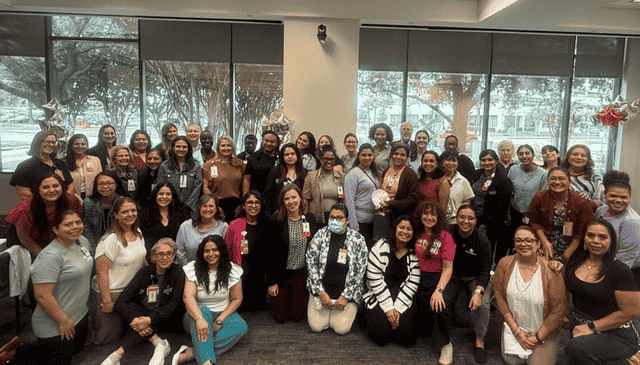
What has made the past 10 years possible for the Public Health Pediatrics team is simple, the people. From the leaders and clinicians to the home visitors and front-line team, everyone shows up every day with compassion, dedication and purpose working toward a common goal—to relieve suffering and help families thrive.
While empathy and commitment drive the team’s actions, their data-driven approach helps track processes and outcomes to inform progress and identify opportunities. The team is unified in their pursuit to improve the lives of children and families, yet every team member is empowered to problem-solve, innovate, and do what’s needed to relieve suffering and make people’s lives better.
A Vision for Prevention
Division Chief Dr. Christopher Greeley’s vision began with a simple but powerful question: What if we could prevent harm before it happens?
“Traditionally, child abuse pediatrics focused on treating the aftermath of trauma. We really wanted to add a therapeutic and preventative culture to the clinical work,” Dr. Greeley said.
For the past 20 years, there has been an increased appreciation of what historically were called Social Determinants of Health, now referred to as Social Drivers of Health or Non-medical Drivers of Health. Dr. Greeley was inspired by an image he saw in 2008 with a picture of child living in profound poverty with the tag line, Why treat someone and send them back to the place that made them sick?
“That framing has always stuck with me. It was simple and compelling. It sparked a sense in me of…we are not the solution to social ills, but we are definitely part of the solution,” Dr. Greeley said.
The division was largely inspired by addressing the questions of—what is our role in addressing the non-medical needs of kids and families and how do we clinically care for those most vulnerable or at risk from these needs? Dr. Greeley proposed this unprecedented approach to care, and Texas Children’s believed in it. Ten years later, we remain the only child abuse prevention program taking this approach to help the community.
A Decade of Growth
Over the past 10 years, what began as a vision to better understand and respond to the non-medical needs of children and families has evolved into a portfolio of clinical, community and research initiatives making a measurable difference.
The clinical improvements have not only filled systemic gaps but also met children where they are with specialized and compassionate care. This includes the development of the foster care clinic and the CHIP clinic for children with brain injury, as well as the At Risk Kids (ARK) clinic, which serves some of the most vulnerable children in our community.
Beyond hospital walls, our community-facing work has become a cornerstone of our program.
We lead the Harris County Child Fatality Review Team and spearhead a suicide prevention needs assessment—critical efforts to understand risks and save lives.
Through upSTART Community programs, we’ve reached more than 3,600 families across 258 zip codes, improving maternal mental health, parental resilience, child development and family well-being.
Collaboration has been key. By working with clinicians, researchers, schools, nonprofits and public agencies, we have extended our reach and strengthened sustainability. According to Dr. Greeley, “These connections have helped us align efforts, share knowledge and amplify impact. Together, these clinical innovations, community programs and partnerships reflect the role we can play in building healthier futures for children and families.”
Building a Healthy Future
The team recently held a celebration to reflect on their profound work over the last 10 years, but they have no plans of slowing down. As they look to the future, they are guided by the voices of families and communities and are expanding in exciting new ways:
-
Medical-Legal Partnership – helping families address challenges in housing, employment and education.
-
Economic Mobility Initiatives – training mothers as Community Health Workers, creating new career pathways.
-
Clinic Integration – weaving lessons from community programs back into clinical care, ensuring seamless support for families.
The team’s work over the past decade has proven that when prevention, clinical care and community partnership come together you can change lives.

